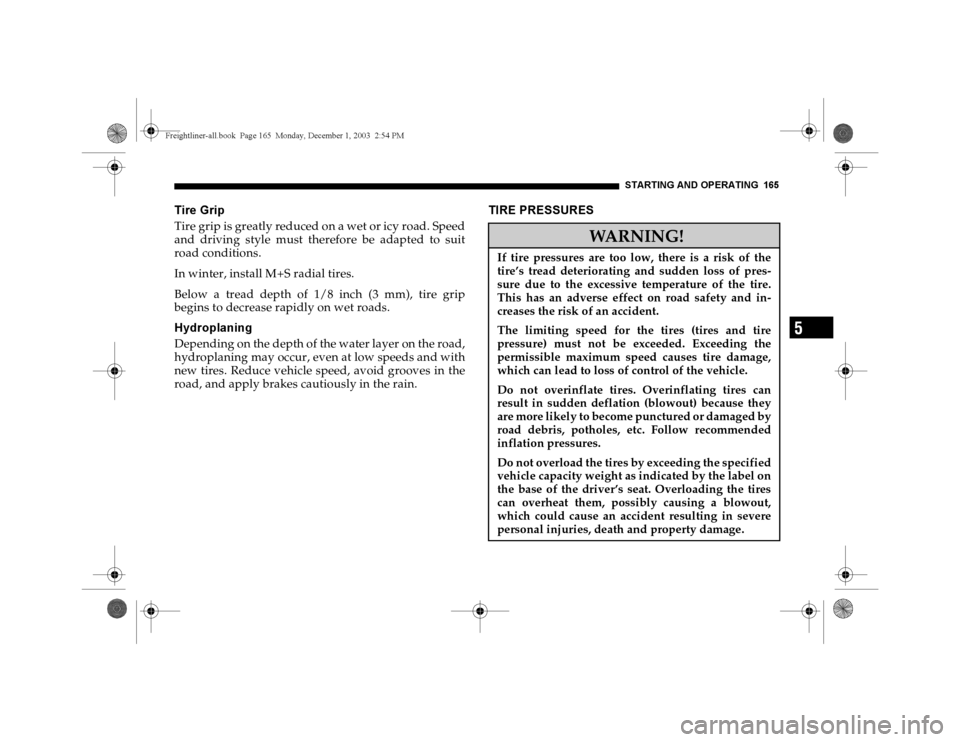Page 47 of 272

THINGS TO KNOW BEFORE STARTING YOUR VEHICLE 47
2
Engine Oil ConsumptionWhen the engine has passed the break-in period, oil
consumption may reach 0.5 % of the fuel consumption
recorded in actual operating circumstances. In isolated
cases and in arduous operating conditions, oil
consumption may increase to 1 % of the fuel
consumption recorded in actual operating
circumstances.
Engine oil consumption depends on the driving style
adopted and the operating conditions. It can only be
judged after the engine has passed the break-in period.
For engine oil level.SA FETY TI PS Check the vehicle’s lights and the general condition
of the vehicle before each trip.
Keep tires at the recommended inflation pressure.
All occupants should fasten their seat belts before
each trip.
Driving in an environmentally responsible manner
will reduce noise, fuel consumption and exhaust
emissions. Allow the engine to warm up under low load use.
Avoid unnecessarily hard acceleration, driving with
the throttle fully open, and carrying loads not
specifically needed on the journey.
Stop the engine during lengthy waiting periods, for
example at traffic lights.
Remove ancillary parts, such as wind deflectors and
roof racks, as soon as they are no longer needed.Freightliner-all.book Pag e 47 Monday , December 1, 2003 2:54 PM
Page 165 of 272

STARTING AND OPERATING 165
5
Tire GripTire grip is greatly reduced on a wet or icy road. Speed
and driving style must therefore be adapted to suit
road conditions.
In winter, install M+S radial tires.
Below a tread depth of 1/8 inch (3 mm), tire grip
begins to decrease rapidly on wet roads.HydroplaningDepending on the depth of the water layer on the road,
hydroplaning may occur, even at low speeds and with
new tires. Reduce vehicle speed, avoid grooves in the
road, and apply brakes cautiously in the rain.
TIRE PRESSURES
WARNING!
If tire pressures are too low, there is a risk of the
tire’s tread deteriorating and sudden loss of pres-
sure due to the excessive temperature of the tire.
This has an adverse effect on road safety and in-
creases the risk of an accident.
The limiting speed for the tires (tires and tire
pressure) must not be exceeded. Exceeding the
permissible maximum speed causes tire damage,
which can lead to loss of control of the vehicle.
Do not overinflate tires. Overinflating tires can
result in sudden deflation (blowout) because they
are more likely to become punctured or damaged by
road debris, potholes, etc. Follow recommended
inflation pressures.
Do not overload the tires by exceeding the specified
vehicle capacity weight as indicated by the label on
the base of the driver’s seat. Overloading the tires
can overheat them, possibly causing a blowout,
which could cause an accident resulting in severe
personal injuries, death and property damage.
Freightliner-all.book Pag e 165 Monday, December 1, 2003 2:54 PM
Page 187 of 272
WHAT TO DO IN EMERGENCIES 187
6
VEHICLE TOOL KIT 1. Locked
2. Unlocked
The vehicle tool kit and the jack are located under the
hatch in the front passenger footwell.
CHA NGING THE TIREIf you get a flat tire while driving, gradually decrease
your speed. Hold the steering wheel firmly and slowly
move to a safe place on the side of the road. The
pressure of the spare wheel always has to be checked
regularly (at least after every tenth time at the filling
station).
Freightliner-all.book Pag e 187 Monday, December 1, 2003 2:54 PM
Page 192 of 272

192 WHAT TO DO IN EMERGENCIESSpare Wheel Location for Chassis
1. Loosen thumb nuts by hand and remove.
2. Use wrench to loosen fixing nut to the thread end.
3. Lift spare wheel holder.
4. Turn hooks to the side and lower spare wheel
holder. Remove the spare wheel.
JA CK
WARNING!
To avoid the risk of serious or fatal injuries or vehicle
damage, please bear the following points in mind:
The jack is intended only for raising the vehicle
briefly, for instance, when changing a wheel. If it is
not designed to enable work to be carried out
underneath the vehicle.
Do not crawl under the jacked-up vehicle. For work
under the vehicle, stands must be used.
The jack must be placed on a firm, flat surface only.
Do not change wheels on uphill or downhill
gradients under any circumstances.
Make sure that no persons are present in the vehicle
when jacking up the vehicle.
Do not start the engine while the vehicle is raised.
Make sure that the distance between the underside
of the tires and the ground does not exceed 1.2 in (30
mm). Otherwise the vehicle may tip over.
Freightliner-all.book Pag e 192 Monday, December 1, 2003 2:54 PM